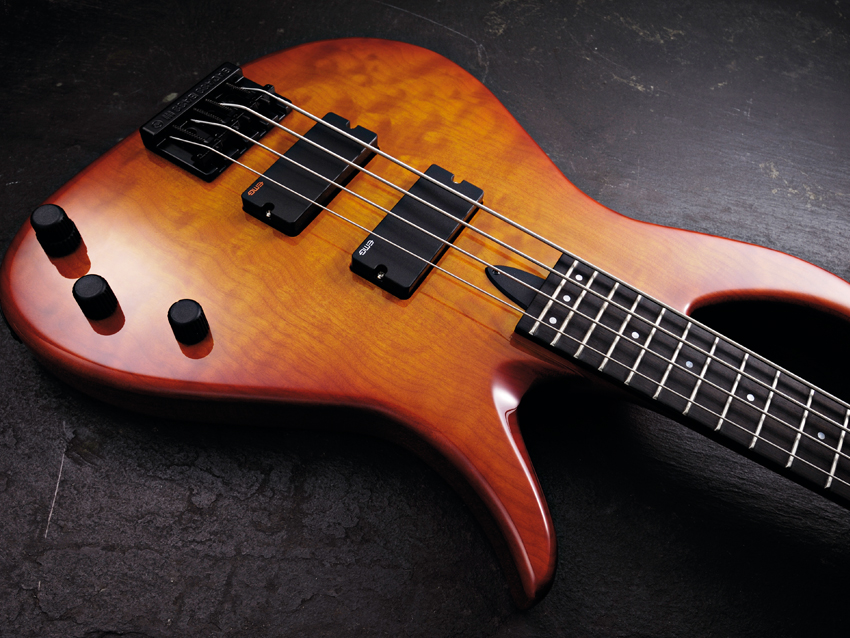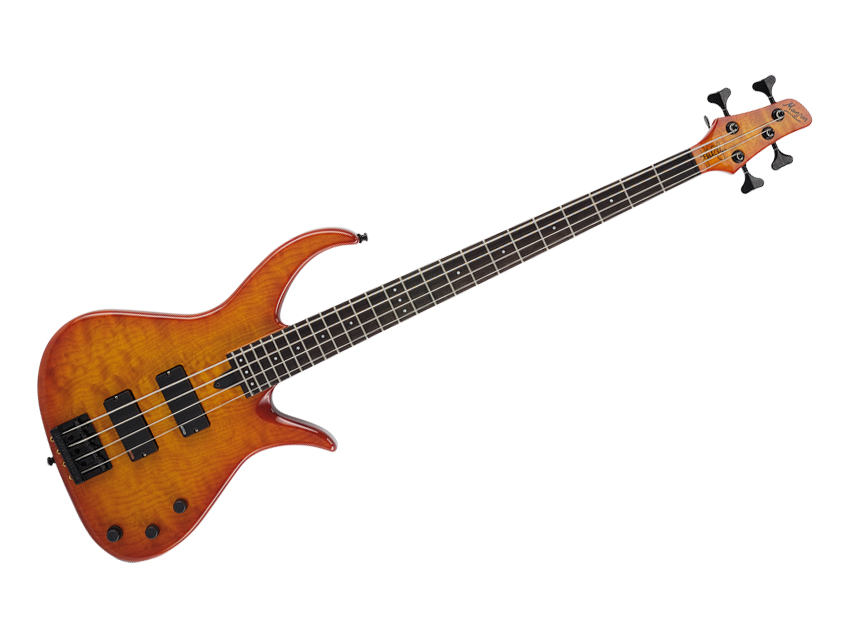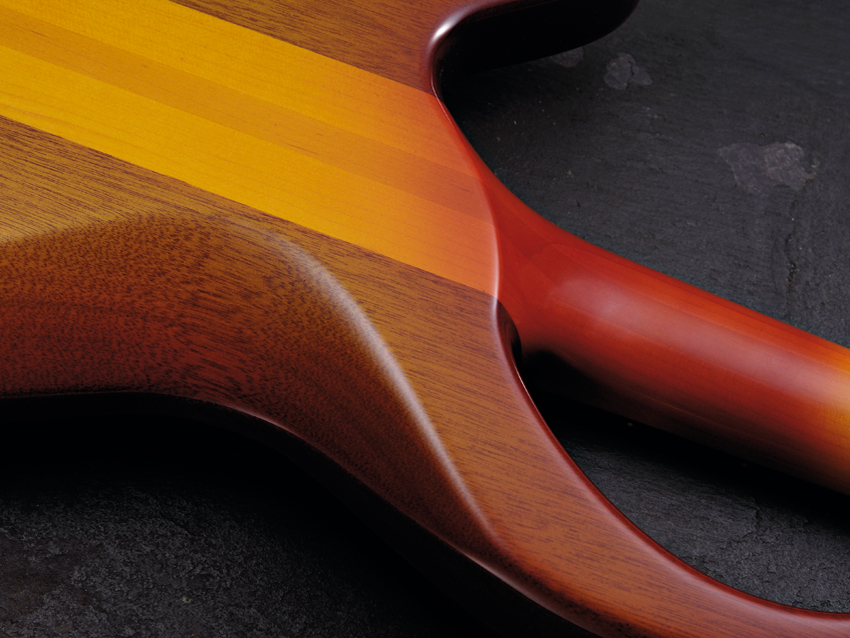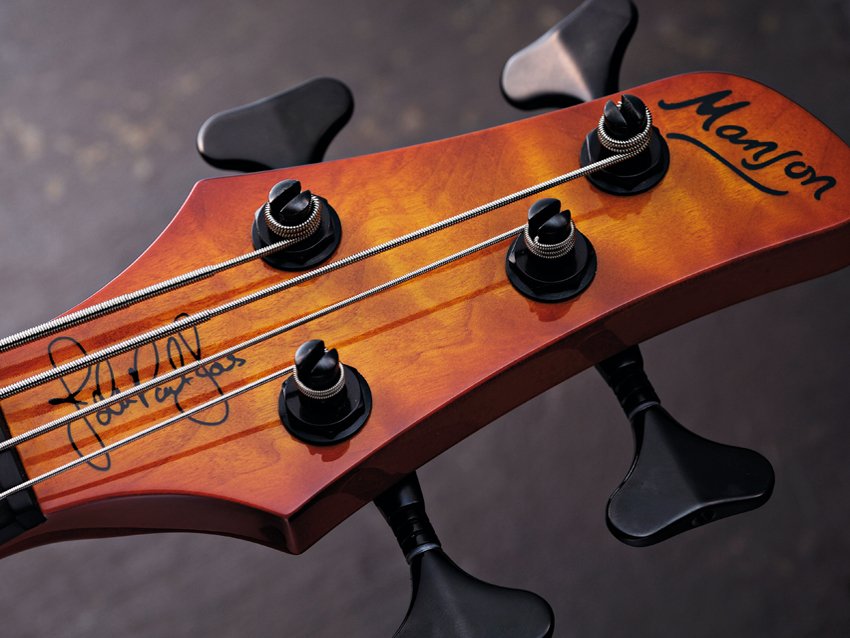MusicRadar Verdict
An exceptionally user-friendly bass, impeccably built, with versatile powerful sounds. A job well done and a match made in heaven.
Pros
- +
Quirky body shape. Build quality. Powerful, versatile sounds.
Cons
- -
We'd prefer dual volume controls to a pan-pot, but JPJ doesn't, and it's his bass!
MusicRadar's got your back

Manson John Paul Jones Signature E-Bass

Manson John Paul Jones Signature E-Bass

Manson John Paul Jones Signature E-Bass

Manson John Paul Jones Signature E-Bass
For some time now Led Zeppelin bassist and session legend John Paul Jones has championed instruments made by UK luthier Hugh Manson. He used one last year while touring with Them Crooked Vultures and the model we have on review here is identical to John's own custom model, with all the upgrades and tweaks included.
So that it remains competitively priced it's been manufactured in the Czech Republic, but before it goes on sale, each bass is given a full quality test and a final set-up in the UK to ensure that Manson's reputation for quality remains intact.
"There are loads of great tones to be extracted from the JPJ and it's hard not to keep twiddling knobs."
This is a truly stunning instrument, which features a beautifully matched maple top that really catches the eye. But Hugh Manson is a luthier known for his classy and refined designs, and the JPJ somehow manages to look the part without appearing showy or garish.
The upper body horn aids stability when playing and the downward curve of the lower horn helps to secure the bass on your leg when sitting down.
The surface is left exposed so you get the full benefit of the exotic top and, proportionately, this is smaller in body than our photographs may suggest. It's a well-balanced instrument and sits comfortably into the body.
The neck profile is similar to a Jazz Bass but a tad deeper back to front so there's more substance in the hand. The cutaway is deep anyway but is further assisted by a chamfer on the lower horn so getting the benefit of all 24-frets is easy.
The ebony fingerboard is super-smooth to the touch and it certainly helps to make this feel a pretty luxurious piece. A very nice addition here too is the Hipshot D-Tuner, which allows the bottom E string to be dropped a full tone to low D.
Actually, this particular model can be adjusted to drop to C, so it does require the lever to operate over quite a large arc compared to some, but it's easy to use and very accurate, holding tuning in both positions even if you keep swapping from one to the other.
When dropped to D, the bottom string still speaks confidently and in balance with the rest of the pack - it's not often you can say that.
Sounds
As active circuits go, this is delightfully uncomplicated, which helps enormously in finding and shaping some truly great sounds.
The pairing of active humbucking pickups provides high output with power to spare, so you feel confident that every movement of the controls is going to make a definite contribution.
The dual-concentric tone control presents treble at the top and bass below, with each control offering boost or cut from a centre detent.
Working on full bass and total cut on treble, with just the neck pickup in action, we discover that although this is rich in warmth - there is no way that it can ever sound woolly. There's bite to each note that ensures clarity and definition.
At the other extreme, and using the bridge pickup only, the sounds naturally become thinner, but here a slightly honky element is revealed and that has a lot to do with why this bass sounds so good when both pickups are in action - and that's likely to be most of the time.
Blending is obviously where the really sumptuous stuff is found, but it's important to explore the extremes in order to appreciate the parameters in which the instrument has been designed to work.
There are simply loads of great tones to be extracted from this JPJ, so much so that it's hard not to keep twiddling knobs when you first plug it in. It possesses phenomenal warmth with a solid nature that gives great body to these excellent mid-range blends.
But there's more than enough top end to bring into the mix that will make this growl and rasp in the manner of an active Rickenbacker, which just goes to show what can be done with a little experimentation.
And yet there's still more, as you can pull up the volume control to engage the single-coil mode of the bridge pickup. It may lose some of the substance of the dual-coil mode, but suddenly you have a highly focused funk machine in your hands - a serious plus.
With this degree of power and tonal manipulation to hand the JPJ bass will naturally work brilliantly for gigs, but with its player-friendly persona, plus full, fruity and hum-free sounds, it will also be a winner in the studio.
It stands to reason when you consider both of the names displayed on the headstock. And the fact that Jones has the first one of these production models as his reserve bass, backing up the hand-made Manson that Hugh made him in the '90s, shows just how confident he is with the result.
The JPJ positively oozes quality, not only in how it looks, but how it feels, plays and sounds too. Of course this all comes at a price, but at just over two grand (thanks partly to the Czech build) it's not the most expensive bass out there.
So, if you want to sound like John Paul Jones or, better still, explore a whole new range of sounds from a beautiful and contemporary bass guitar then this is a great place to satisfy your needs.
“I called out to Mutt and said, ‘How about this?’... It was a complete fluke": How Def Leppard created a rock anthem - with a little bit of divine intervention
Baby Audio's Smooth Operator spectral balancing plugin goes pro
"It was ugly, like watching a divorce between four people. After a while, I had to get out": Beatles engineer Geoff Emerick on the recording of Abbey Road, track-by-track









